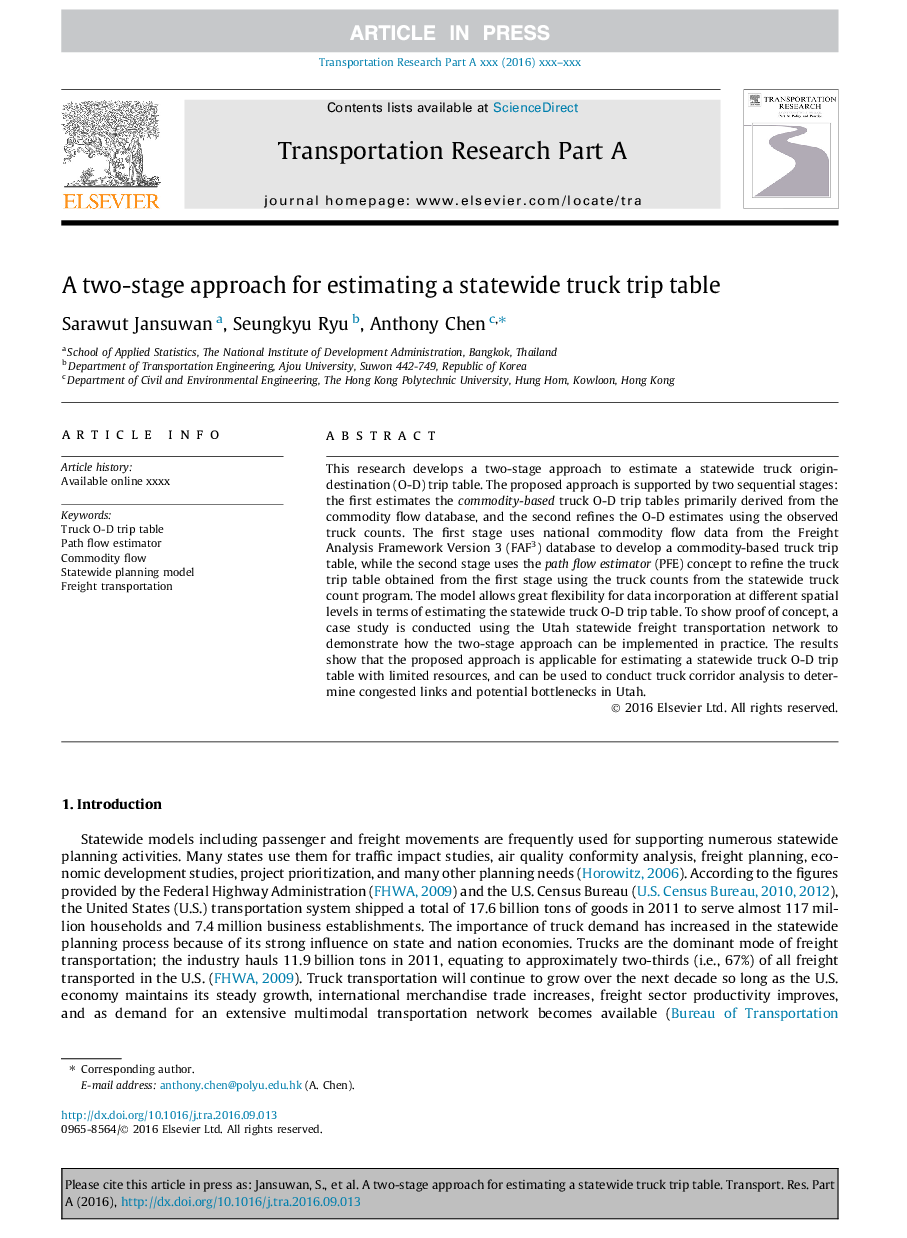| Article ID | Journal | Published Year | Pages | File Type |
|---|---|---|---|---|
| 4928953 | Transportation Research Part A: Policy and Practice | 2017 | 19 Pages |
Abstract
This research develops a two-stage approach to estimate a statewide truck origin-destination (O-D) trip table. The proposed approach is supported by two sequential stages: the first estimates the commodity-based truck O-D trip tables primarily derived from the commodity flow database, and the second refines the O-D estimates using the observed truck counts. The first stage uses national commodity flow data from the Freight Analysis Framework Version 3 (FAF3) database to develop a commodity-based truck trip table, while the second stage uses the path flow estimator (PFE) concept to refine the truck trip table obtained from the first stage using the truck counts from the statewide truck count program. The model allows great flexibility for data incorporation at different spatial levels in terms of estimating the statewide truck O-D trip table. To show proof of concept, a case study is conducted using the Utah statewide freight transportation network to demonstrate how the two-stage approach can be implemented in practice. The results show that the proposed approach is applicable for estimating a statewide truck O-D trip table with limited resources, and can be used to conduct truck corridor analysis to determine congested links and potential bottlenecks in Utah.
Related Topics
Physical Sciences and Engineering
Engineering
Civil and Structural Engineering
Authors
Sarawut Jansuwan, Seungkyu Ryu, Anthony Chen,
